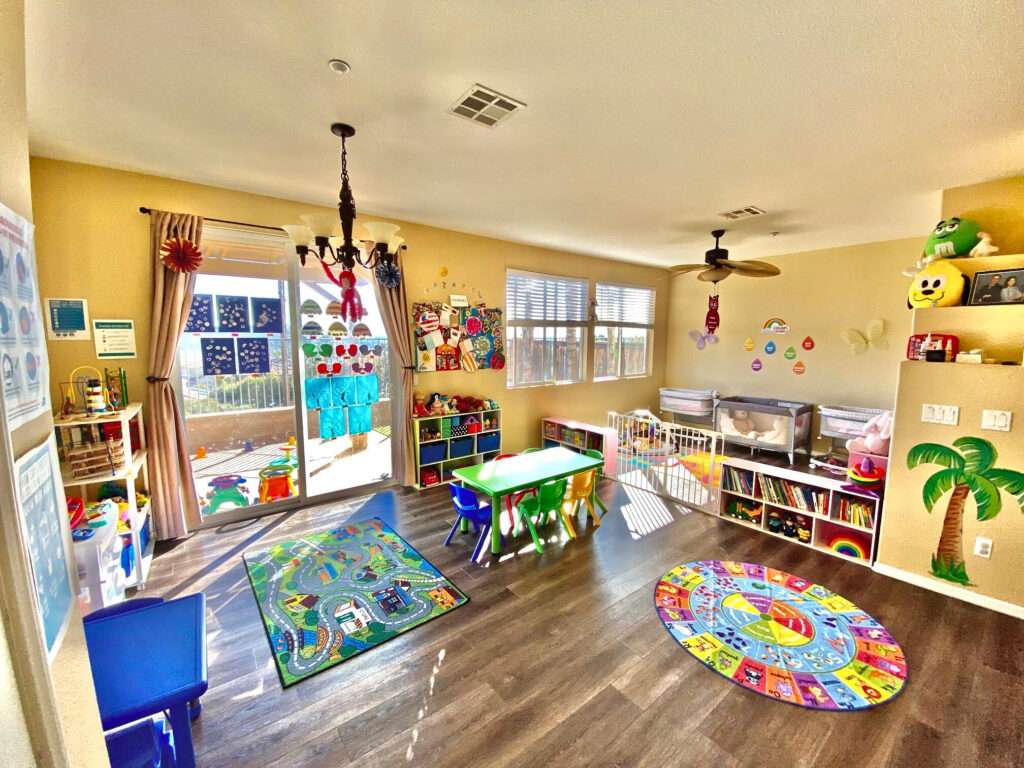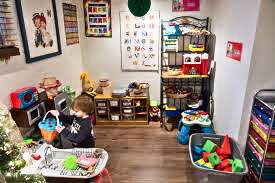At-Home Childcare in Canada: A Comprehensive Guide for Parents
At Home Childcare offers a flexible and personalized approach to caring for your children. With the right strategies and resources, you can create a nurturing environment that supports your child’s development and meets your family’s needs.
In recent years, be at home childcare has emerged as a popular choice for Canadian parents seeking flexibility and personalized care for their children. With the dynamic landscape of work-life balance, especially in a post-pandemic world, understanding the nuances of at-home childcare has become more crucial than ever. This guide explores everything you need to know about at-home childcare in Canada, from the benefits and challenges to legal requirements and tips for success. Explore the benefits and tips for successful at home childcare near me. Create a nurturing and educational environment for your child today.

1. Understanding At Home Childcare
At-home childcare encompasses several forms, including nanny care, au pairs, and in-home daycare services. Each option offers a unique set of advantages and challenges. Unlike traditional daycare centers, at-home childcare provides a personalized environment where caregivers can focus on the specific needs of each child. This individualized attention can be especially beneficial for infants and toddlers who thrive in stable, one-on-one settings.
2. Benefits of At Home Childcare
- Personalized Attention: One of the most significant benefits of at-home childcare is the personalized attention children receive. Caregivers can tailor activities to suit a child’s interests and developmental stage, promoting a nurturing environment that supports emotional and cognitive growth.
- Flexible Scheduling: At-home childcare offers unparalleled flexibility. Unlike daycare centers with fixed hours, at-home caregivers can often accommodate irregular schedules, making it easier for parents with non-traditional work hours to manage childcare.
- Familiar Environment: Children often feel more comfortable in familiar surroundings. Having a caregiver come to your home minimizes disruptions in your child’s routine and provides a sense of security.
- Personalized Attention: Tailor activities and care to your child’s unique interests and needs.
- Flexibility: Adjust routines and schedules to suit your family’s lifestyle.
- Comfort: Provide a familiar environment that helps children feel secure and relaxed.
- Cost-Effective: Save on commuting and daycare fees.
3. Challenges of At Home Childcare
- Cost Considerations
The cost of at-home childcare can be higher than other childcare options. Parents need to budget for salaries, benefits, and sometimes agency fees if they use a placement service. However, for many families, the benefits outweigh the costs.
- Finding the Right Fit
Finding a caregiver who aligns with your family’s values and parenting style can be challenging. It requires thorough interviews, reference checks, and sometimes a trial period to ensure the right match.
4. Legal Requirements and Regulations
In Canada, at-home childcare providers are subject to various regulations that vary by province. It’s essential for parents to familiarize themselves with these requirements to ensure compliance and safety.
- Employment Standards
Employing a nanny or caregiver means you are considered an employer. This status comes with responsibilities such as adhering to employment standards, paying taxes, and providing statutory benefits like vacation pay and overtime.
- Background Checks and Certifications
Before hiring a caregiver, conduct thorough background checks. This process includes verifying qualifications, conducting criminal record checks, and ensuring the caregiver holds certifications like First Aid and CPR.

5. Tax Considerations
There are several tax implications and benefits associated with at-home childcare in Canada.
- Child Care Expense Deduction
The Child Care Expense Deduction allows parents to deduct certain childcare costs from their taxable income. This deduction can help offset the costs associated with hiring an at-home caregiver.
- Tax Credits
Parents may also be eligible for various tax credits, such as the Canada Child Benefit (CCB), which provides additional financial assistance to families with children.
6. Selecting the Right At Home Care Option
- Nannies
Hiring a nanny provides one-on-one care in your home. This option is ideal for families seeking personalized attention and flexibility. Nannies can also assist with household tasks, depending on their contract.
- Au Pairs
An au pair is typically a young adult from another country who lives with a host family and provides childcare in exchange for room, board, and a stipend. This arrangement offers cultural exchange benefits and can be a cost-effective solution for families.
- In-Home Daycare
In-home daycare involves a caregiver providing care for a small group of children in their home. This option combines the benefits of social interaction with a more intimate setting than a traditional daycare center.

7. Tips for Successful At-Home Childcare
- Clear Communication
Establish open and honest communication with your caregiver. Clearly outline your expectations, schedules, and any special instructions regarding your child’s care.
- Structured Routine
While at-home childcare offers flexibility, maintaining a structured routine can benefit children. Consistent meal times, nap schedules, and activities provide a sense of stability and security.
- Regular Check-Ins
Regularly check in with your caregiver to discuss your child’s progress, address any concerns, and provide feedback. This dialogue fosters a positive working relationship and ensures that your child’s needs are being met.
8. Safety Considerations
- Childproofing Your Home
Ensure your home is safe for your child by implementing childproofing measures. Secure furniture, cover electrical outlets and ensure that hazardous materials are out of reach.
- Emergency Preparedness
Prepare for emergencies by having a well-stocked first aid kit and an emergency contact list readily available. Make sure your caregiver knows your family’s emergency plan.
9. The Role of Technology in At Home Childcare
Technology can enhance at-home childcare by providing tools for communication and monitoring. Consider using video calls for virtual check-ins or scheduling apps to coordinate routines and activities.

10. Community Support and Resources
Engage with local parenting groups and online communities to exchange advice and share experiences. These networks can offer valuable insights and support as you navigate the world of at-home childcare.
11. Setting Up an Effective At-Home Childcare Environment
- Designate a Dedicated Space: Create a safe and engaging area with age-appropriate toys and learning materials.
- Establish a Routine: Develop a consistent daily schedule to provide structure and stability.
- Incorporate Learning Activities: Integrate educational games, arts and crafts, and reading sessions.
- Promote Physical Activity: Include outdoor playtime and exercises to support physical health and development.
- Prioritize Safety: Childproof your home by securing dangerous items and ensuring safe play areas.
12. Balancing Work and Childcare
- Set Boundaries: Designate specific work hours and communicate them clearly to your family.
- Utilize Technology: Use educational apps and videos to engage children while you attend to work tasks.
- Seek Support: Share responsibilities with a partner or hire a part-time caregiver if needed.
13. Tips for Successful At-Home Childcare
- Stay Organized: Use planners or apps to keep track of activities and appointments.
- Be Patient: Allow for flexibility and understand that plans may change.
- Communicate: Foster open communication with your child about their needs and feelings.
- Self-Care: Take time for yourself to recharge and avoid burnout.

14. FAQs
- What is at-home childcare?
It involves caring for children within their own home environment and providing personalized and flexible care.
- How can I create a learning environment at home?
Incorporate educational materials and activities, establish routines, and encourage exploration and creativity.
- What are the safety considerations for safety at-home childcare?
Childproof your home, supervise playtime, and ensure emergency contacts are accessible.
- How do I balance work and Colorado safer at-home childcare?
Set boundaries, utilize technology, and seek support from partners or part-time caregivers.
- Is at-home childcare services cost-effective?
Yes, it can save money on commuting and daycare fees and allows for personalized budgeting.
Conclusion
At home childcare in Canada offers a versatile and personalized solution for families seeking flexibility and individualized care for their children. By understanding the benefits, challenges, and legal considerations, parents can make informed decisions that best suit their family’s needs. Whether you choose a nanny, au pair, or in-home daycare, clear communication, structured routines, and a focus on safety will ensure a positive experience for both your child and your family.
At-home childcare offers numerous benefits for both parents and children. By creating a structured and supportive environment, you can foster your child’s growth and well-being while balancing your family’s unique needs.

